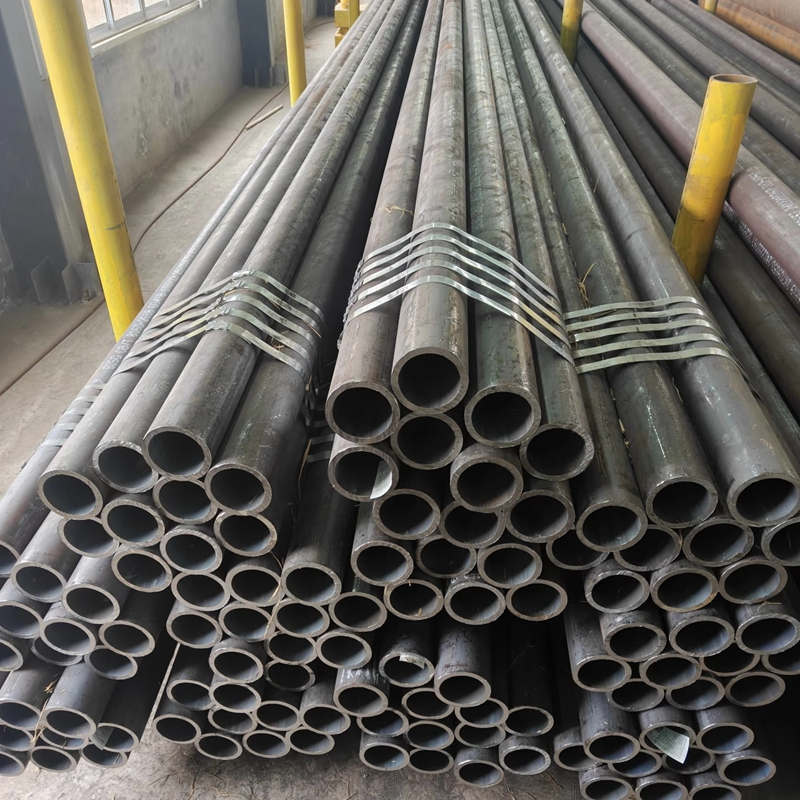What is Carbon Steel

What is Carbon Steel?
What is carbon steel? This question may puzzle lots of bearing users or engineers. Carbon steel is one of the most widely used materials in industrial manufacturing, particularly in the production of bearings. It is a versatile alloy mainly composed of iron and carbon, with a carbon content typically ranging from 0.05% to 2.0%, which directly affects its hardness and strength. These characteristics make carbon steel an excellent choice for applications that demand durability and reliable performance under heavy loads.
Carbon steel is generally classified into three main types, each with distinct properties and applications:
-
Low Carbon Steel: Contains up to 0.3% carbon, offering good ductility and easy weldability.
-
Medium Carbon Steel: Contains 0.3% to 0.6% carbon, providing a balanced combination of strength and ductility.
-
High Carbon Steel: Contains more than 0.6% carbon, valued for its hardness and wear resistance, though it is less ductile.
Why Material Selection Is Crucial for Reliable Bearings?
Carbon steel is a preferred material for bearings because it combines strength, durability, and cost-effectiveness. Its unique properties ensure that bearings can withstand high loads, resist wear, and maintain reliable performance over time. The carbon content in the steel allows manufacturers to adjust hardness and toughness, creating bearings suitable for different industrial applications.
Key Reasons Carbon Steel is Important in Bearings:
1. High Load Capacity: Carbon steel bearings can handle heavy radial and axial loads without deforming.
2. Durability and Wear Resistance: Carbon steel resists abrasion and surface damage, extending the lifespan of bearings.
3. Cost Efficiency: Compared to stainless steel or specialty alloys, carbon steel offers excellent performance at a more affordable price.
4. Versatility: Heat treatment can enhance carbon steel properties, allowing bearings to meet specific hardness or toughness requirements for various machinery.
Bearing Steel vs Carbon Steel: What You Need to Know:
When selecting materials for bearings and other industrial components, understanding the differences between bearing steel and carbon steel is essential. Both materials are widely used in manufacturing, but they have distinct properties that make them suitable for different applications.
What is Bearing Steel?
Bearing steel is a high-quality alloy designed specifically for bearing applications. It typically contains a higher level of carbon and additional alloying elements like chromium, which improve hardness, wear resistance, and fatigue strength. This makes bearing steel ideal for high-speed and high-load environments, where precision and durability are critical.
Key Differences Between Bearing Steel and Carbon Steel:
| Feature | Bearing Steel | Carbon Steel |
|---|---|---|
| Carbon Content | Typically higher (0.95%-1.05%) | 0.05%-2.0% |
| Hardness | Very high (HRC: 58-65) | Medium to high (HRC: 20-50) |
| Fatigue Strength | Superior, ideal for high-speed or heavy-load bearings | Lower, suitable for general applications |
| Corrosion Resistance | Moderate, often requires lubrication or coating | Limited, more prone to rust |
| Cost | Higher due to alloying and precision manufacturing | Lower, cost-effective for general use |
Applications:
-
Bearing Steel: Precision ball bearings, roller bearings, aerospace components, automotive high-speed bearings.
-
Carbon Steel: General machinery, low-to-medium load bearings, construction equipment, industrial motors, rolling shutters etc.
FAQs About Carbon Steel and Bearing Steel:
Q1: Is bearing steel more expensive than carbon steel?
A: Yes. Bearing steel costs more because it contains specialized alloys and undergoes precise manufacturing to deliver superior hardness, wear resistance, and durability for high-load and high-speed applications. Carbon steel is more cost-effective but suited for general uses.
Q2: How does the manufacturing of bearing steel differ from carbon steel?
A: Bearing steel undergoes precise alloying, heat treatment, and strict quality control to ensure high hardness, wear resistance, and durability for heavy-load or high-speed applications. Carbon steel has a simpler production process, making it more cost-effective for general uses.
Q3: Can carbon steel be used in bearings?
A: Yes, carbon steel suits general-purpose or low-to-medium load bearings, including those in light- to medium-duty conveyor systems, fans, small machine tools, and similar equipment. For high-speed or heavy-load applications, choose bearing steel, which delivers higher hardness, better wear resistance, and longer service life.
Q4: Can heat treatment improve carbon steel for bearing use?
A: Yes, heat treatment increases carbon steel’s hardness and wear resistance, making it suitable for some low- to medium-load bearing applications. However, bearing steel still outperforms carbon steel in high-load or high-speed conditions.
Q5: How do I choose between carbon steel and bearing steel for my bearings?
A: Choose carbon steel for cost-effective, general-purpose, or moderate-load applications. Select bearing steel when your bearings must withstand high loads, high speeds, or harsh conditions, where durability and precision are critical.
Q6: Can I use carbon steel bearings outdoors or in humid environments?
A: Carbon steel bearings may suffer corrosion in wet environments. Enhance their lifespan by selecting corrosion-resistant materials or applying protective coatings like galvanization.

